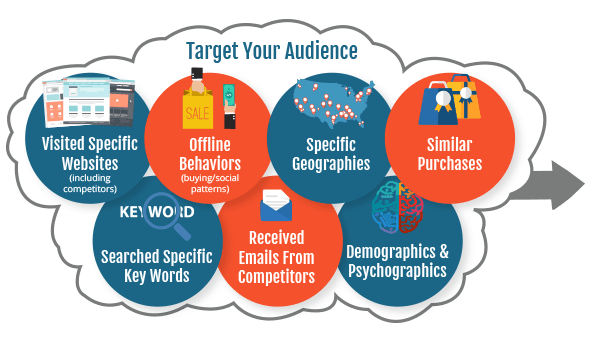HOW IS GEOFENCING BEING USED IN MARKETING AND ADVERTISING?
Geofencing is a technology that uses GPS and other location data to trigger specific actions based on a consumer’s proximity to a store or another physical location. Geofencing could be used for marketing purposes, in order to immediately trigger sales or other actions, or it could simply be used to collect data about which times of day different shoppers visit certain stores.
Geofencing campaigns can be set up across multiple types of online advertising campaigns, such as search engine advertising, display advertising, remarketing, video advertising, etc.

Here are some examples of how small businesses can use geofencing to enhance their digital marketing efforts:
- A retail store could create a virtual perimeter around its location and send deal notifications or other information to customers’ smartphones as they pass through the designated area.
- A car dealer could set up a geofence aimed at targeting individuals who are leaving another dealership after browsing for a vehicle. If the dealer sends a direct message to those customers with an offer for zero percent financing on a comparable car model, they may be very likely to continue their browsing since the deal addressed a particular need they had at the time.
- Event and concert producers can use geofencing to provide targeted promotions and advertising at their venues. Artists and musicians, as well as their managers, could also use geofencing to promote upcoming shows for those who are likely to revisit the location. This same process could be used to collect data about people within the geofenced area to understand the mindset of attendees or predict future event turnouts.
- A law firm or lawyer could create a geofencing advertising campaign to target specific geographic areas of interest, such as hospitals or jails, to reach their target client. They could also set up geo-targeting around competitor locations.
Even if a geofenced advertisement, offer, or notification does not immediately prompt consumers to visit a business, it can still help business owners know where consumers were when they received the message. This very user-specific data should allow businesses to refine their targeting efforts in the future based on which types of communications and targeted users were most successful.

